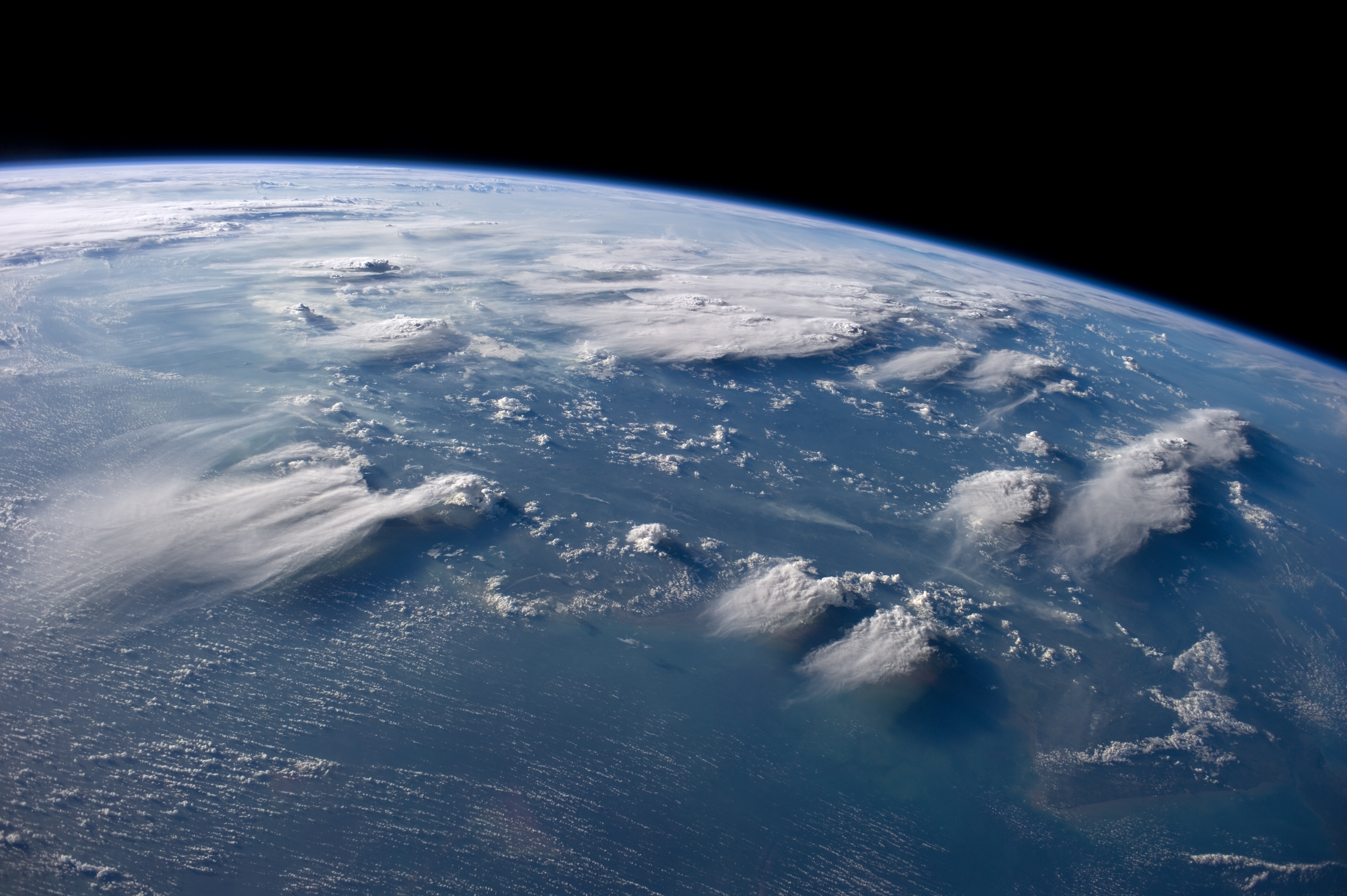|
Entrainment (meteorology)
Entrainment is a phenomenon of the atmosphere which occurs when a turbulent flow captures a non-turbulent flow. It is typically used to refer to the capture of a wind flow of high moisture content, or in the case of tropical cyclones, the capture of drier air. Detrainment is the opposite effect, when the air from a convective cloud, usually at its top, is injected in the environment. Theory Entrainment is the mixing of environmental air into a preexisting air current or cloud so that the environmental air becomes part of the current or cloud. The ''entrainment coefficient'' in clouds is one of the most sensitive variables causing uncertainty in climate models. Homogeneous mixing is a model that assumes that the timescale for the mixing within a cloud was short compared to the evaporation timescale. This would imply that the dry, unsaturated, environmental air would be entrained throughout the cloud before it would start to evaporate the cloud droplets. The entrainment mixing th ... [...More Info...] [...Related Items...] OR: [Wikipedia] [Google] [Baidu] |
Entrainment Detrainment En
Entrainment may refer to: * Air entrainment, the intentional creation of tiny air bubbles in concrete * Brainwave entrainment, the practice of entraining one's brainwaves to a desired frequency * Entrainment (biomusicology), the synchronization of organisms to an external rhythm * Entrainment (chronobiology), the alignment of a circadian system's period and phase to the period and phase of an external rhythm * Entrainment (engineering), the entrapment of one substance by another substance * Entrainment (hydrodynamics), the movement of one fluid by another * Entrainment (meteorology), a phenomenon of the atmosphere * Entrainment (physical geography), the process by which surface sediment is incorporated into a fluid flow * Entrainment (physics) Injection locking and injection pulling are the frequency effects that can occur when a harmonic oscillator is disturbed by a second oscillator operating at a nearby frequency. When the coupling is strong enough and the frequencies near eno ... [...More Info...] [...Related Items...] OR: [Wikipedia] [Google] [Baidu] |
Atmosphere
An atmosphere () is a layer of gas or layers of gases that envelop a planet, and is held in place by the gravity of the planetary body. A planet retains an atmosphere when the gravity is great and the temperature of the atmosphere is low. A stellar atmosphere is the outer region of a star, which includes the layers above the opaque photosphere; stars of low temperature might have outer atmospheres containing compound molecules. The atmosphere of Earth is composed of nitrogen (78%), oxygen (21%), argon (0.9%), carbon dioxide (0.04%) and trace gases. Most organisms use oxygen for respiration; lightning and bacteria perform nitrogen fixation to produce ammonia that is used to make nucleotides and amino acids; plants, algae, and cyanobacteria use carbon dioxide for photosynthesis. The layered composition of the atmosphere minimises the harmful effects of sunlight, ultraviolet radiation, the solar wind, and cosmic rays to protect organisms from genetic damage. The ... [...More Info...] [...Related Items...] OR: [Wikipedia] [Google] [Baidu] |
Tropical Cyclone
A tropical cyclone is a rapidly rotating storm system characterized by a low-pressure center, a closed low-level atmospheric circulation, strong winds, and a spiral arrangement of thunderstorms that produce heavy rain and squalls. Depending on its location and strength, a tropical cyclone is referred to by different names, including hurricane (), typhoon (), tropical storm, cyclonic storm, tropical depression, or simply cyclone. A hurricane is a strong tropical cyclone that occurs in the Atlantic Ocean or northeastern Pacific Ocean, and a typhoon occurs in the northwestern Pacific Ocean. In the Indian Ocean, South Pacific, or (rarely) South Atlantic, comparable storms are referred to simply as "tropical cyclones", and such storms in the Indian Ocean can also be called "severe cyclonic storms". "Tropical" refers to the geographical origin of these systems, which form almost exclusively over tropical seas. "Cyclone" refers to their winds moving in a circle, whirling ... [...More Info...] [...Related Items...] OR: [Wikipedia] [Google] [Baidu] |
Entrainment
Entrainment may refer to: * Air entrainment, the intentional creation of tiny air bubbles in concrete * Brainwave entrainment, the practice of entraining one's brainwaves to a desired frequency * Entrainment (biomusicology), the synchronization of organisms to an external rhythm * Entrainment (chronobiology), the alignment of a circadian system's period and phase to the period and phase of an external rhythm * Entrainment (engineering), the entrapment of one substance by another substance * Entrainment (hydrodynamics), the movement of one fluid by another * Entrainment (meteorology), a phenomenon of the atmosphere * Entrainment (physical geography), the process by which surface sediment is incorporated into a fluid flow * Entrainment (physics) Injection locking and injection pulling are the frequency effects that can occur when a harmonic oscillator is disturbed by a second oscillator operating at a nearby frequency. When the coupling is strong enough and the frequencies near eno ... [...More Info...] [...Related Items...] OR: [Wikipedia] [Google] [Baidu] |
Clouds
In meteorology, a cloud is an aerosol consisting of a visible mass of miniature liquid droplets, frozen crystals, or other particles suspended in the atmosphere of a planetary body or similar space. Water or various other chemicals may compose the droplets and crystals. On Earth, clouds are formed as a result of saturation of the air when it is cooled to its dew point, or when it gains sufficient moisture (usually in the form of water vapor) from an adjacent source to raise the dew point to the ambient temperature. They are seen in the Earth's homosphere, which includes the troposphere, stratosphere, and mesosphere. Nephology is the science of clouds, which is undertaken in the cloud physics branch of meteorology. There are two methods of naming clouds in their respective layers of the homosphere, Latin and common name. Genus types in the troposphere, the atmospheric layer closest to Earth's surface, have Latin names because of the universal adoption of Lu ... [...More Info...] [...Related Items...] OR: [Wikipedia] [Google] [Baidu] |
|


